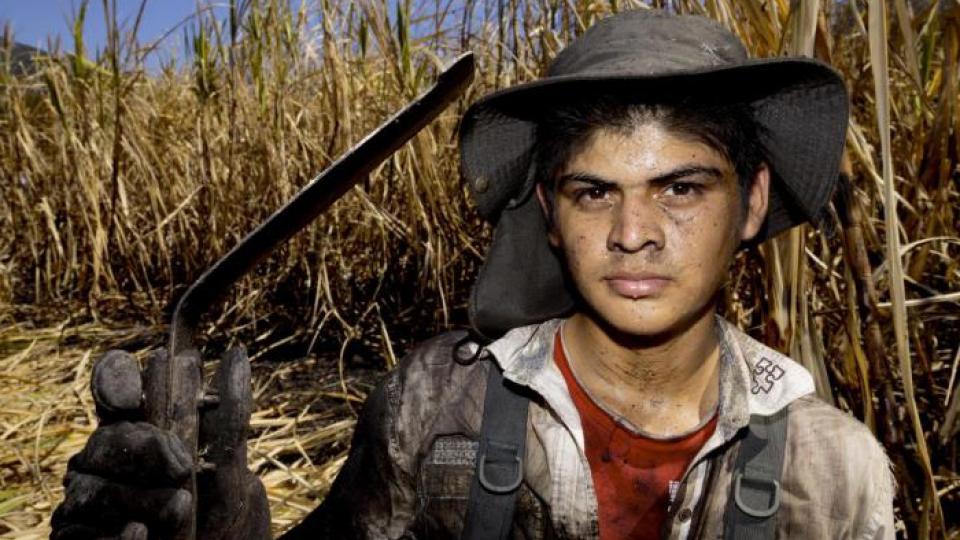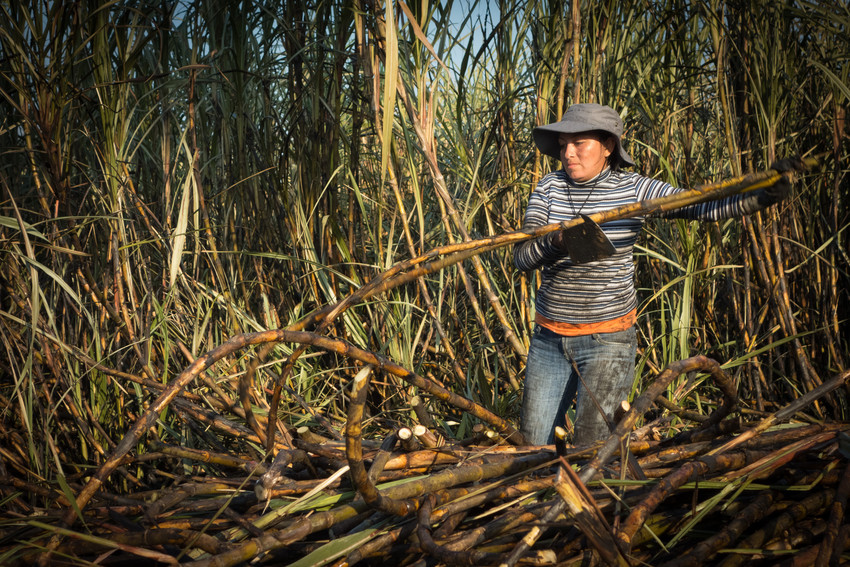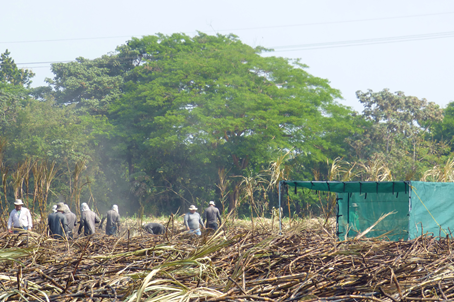The next time you reach for the sugar to add it to your favorite beverage, take a moment to think how it got there. More likely than not it came from sugarcane (80% of the world’s sugar comes from cane, the rest from sugar beets.) harvested in a tropical location in one of some 80 countries growing sugarcane. But getting it from the cane fields to your table takes some doing, and for some, dying.

Jose Oscar Rivas Vasquez (19), works in the sugarcane fields of El Angel Sugar Mill outside of Suchitoto, El Salvador (Photo credit: Ed Kashi).
Sugarcane is a grass that grows in hot humid conditions. Its stalks are filled with a sweet sap that, once extracted and refined, becomes the white stuff we see everywhere. But before it can be refined it needs to be cut and there’s the rub; the vast majority of cane is cut by hand.
Before cutting, a typical cane field is set on fire to burn the leaves and chase away the rats, snakes and other creatures. Black smoke billows into the air and soot covers everything. As soon as the flames are gone the cutters get to work, attacking the cane with long machete-like knives. It is backbreaking, exhausting work. The soot gets into eyes, nose and lungs. Temperatures in the fields rise over 40 degrees Celsius. Cutters are paid on piecework, so they rarely take breaks. A cutter can harvest 12 tonnes of cane in a day, losing as much as 2.5 kilos of bodyweight in the process; similar to what a marathon runner loses in a single race. But cane cutters run this “race” every day, 6-7 days a week, during the entire harvest season. It is not easy work, by any means. But, for many, it is the only work they can find.

Temperatures can top 40 degrees Celsius in the cane fields.
As bad as that is, it isn’t the worst part. The heat, humidity and exhausting effort lead to dehydration and kidney damage – Chronic Kidney Disease (CKD.) In some places, CKD is the greatest cause of death amongst working age males, the very people who are working in the cane fields. In Nicaragua alone, as many as 25,000 men have died from this disease, over the last 20 years. 68% of the workforce in one village is affected by the disease, and life expectancy has dropped to 48 years. It is a high price to pay to sweeten your morning cuppa.

But, we’re working to change that. With the support of the Dutch PostCode Lottery and companies such as Kellogg, Solidaridad has developed a program that changes working conditions in order to reduce the worst triggers leading to the disease. Early results, working with the El Angel sugar mill in El Salvador, have demonstrated the effectiveness of the program in improving the health conditions and productivity of the cutters. While this isn’t curing their disease, it is making their lives more comfortable. Ongoing research is examining the causes of the disease and further improvements in working conditions are likely to be implemented as the mechanisms are better understood.
Meanwhile, Solidaridad is expanding the work to more than 25 mills in Central America through PanAmericaña, a multi-stakeholder platform established to bring significant change to the sugarcane industry. With support from industry, governments and civil society organizations and supporters, we’re committed to expanding the effort until CKD in cane fields is a thing of the past. Long-term, mechanized cutting may be the answer. But that will mean first finding alternative employment for the thousands of cutters wielding their cane knives today.

Training on Thermic Stress and Dehydration Prevention, El Salvador
So enjoy your sweetened beverage, but be mindful of how the sugar made it to your cup.
Learn more about PanAmericaña and activities being carried out as part of the initiative.
Originally published as a blog on LinkedIn.
